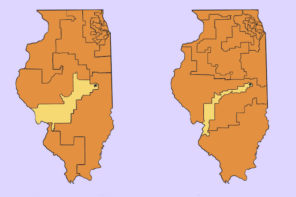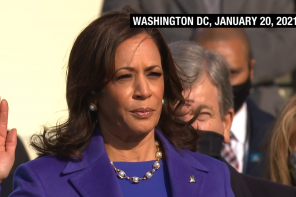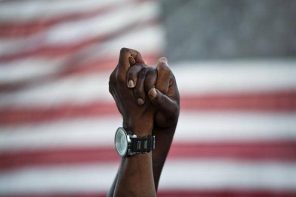Denver claims that its Columbus Day parade is the nation’s largest. It surely has been the most controversial; as Colorado’s large Native American rights movement often confronts the paraders. When I watched the proceedings a few years ago, though my sympathies were certainly with the protesters, I was surprised to find a different kind of sympathy for the paraders, too.
They were all white folks, mostly Italian-Americans, riding in cars and on cheaply-made floats, trying to create an air of excitement. But there was something sad, hollow, and strangely touching about it—as if they were trying too hard to whip up enthusiasm and regain a proud sense of identity.
Security, Pride, Tranquility
Many looked like they had just stepped out of the pages of a 1950s-era issue of Life magazine. I got a strong impression of people longing for the secure identity that our culture has taught us to associate (both rightly and wrongly) with the white adults of the ’50s, before their children heard the Jefferson Airplane’s call to tear down the wall, motherfucker. For the white paraders celebrating Columbus, the Native American protesters were, I suspected, a disturbing throwback to the counterculture that ended the (largely imagined) tranquility of American life. That made Columbus himself a symbol of all that the paraders seemed to be so desperately seeking: identity, security, pride, tranquility.
But how could Columbus give all, or any, of that any more? The simple, inspiring story of Columbus “discovering America,” which was the only story I ever heard as a child in the ’50s, has long been torn to shreds along with so much else from that era. We now know: plenty of Europeans before Columbus knew the earth was round; Europeans had reached these shores long before 1492; Columbus and his crew treated the indigenous Carib people with incredible cruelty. We know, too, that Columbus’ motives were a disturbing compound of crass greed for gold and apocalyptic quest for a heavenly paradise here on Earth.
Perhaps that Columbus Day parade struck me as so hollow because it was a vain quest to revive an American foundation myth that is now dead and buried, beyond all hope of resurrection. Perhaps the paraders’ strained enthusiasm was the most vivid evidence that they had come to celebrate an absent mythic center.
When we go looking for white America’s foundation myth now, we go back no further than the “Founding Fathers,” whose real and purported deeds fill whole shelves in the local bookstore. What they discovered, the books generally agree, was a new set of political and social ideas, as if they’d anticipated the advice of Thoreau: “Be a Columbus to whole new continents and worlds within you, opening new channels, not of trade, but of thought.”
But the traditional myth of Columbus (RIP) said nothing about new ideas or worlds within. It was all about a new land, a new world defined strictly geographically. As long as the myth was vibrant, it assured Americans that they needed no sophisticated concepts. The land of the United States itself (which became, in the U.S. version of the myth, synonymous with the “America” Columbus “discovered”) would be the paradise Columbus sought. It would exude all of his mythic qualities: courage, initiative, intelligence, skill, and the freedom always to be making a new beginning.
Simply by living on the land, the myth promised, each of us and our nation as a whole would always embody those qualities. They would permanently define America, celebrated in song as “Columbia, the gem of the ocean.”
The Fear of a Broken Society
The demise of that mythic America and its foundation story has powerful political effects that stretch from Columbus Day to Election Day and beyond. “Voter Disgust Isn’t Only About Issues,” as the headline of a recent article by New York Times reporter Matt Bai rightly declared. Bai is a rare mass media journalist who recognizes that politics is largely a matter of cultural symbolism.
Independent voters are much less concerned about jobs and the economy than about what they see as “the larger breakdown of civil society,” he reported. And they are quick to blame the party in power for that breakdown, to assume that the only way to save society is to throw the rascals out—only to find, Bai concluded, that the other party, once in power, quickly becomes the rascals who must be thrown out.
If the fear of a broken society is, at its deepest level, the fear of a broken foundation myth—a loss of the sense of secure identity that once came from simply living on American soil—then no party is to blame for it and no party can fix it. The parade of candidates on TV promising to make it all better is as hollow as the Columbus Day parade I saw.
The parades continue, though, because saying goodbye to the mythic Columbus and greeting a truly new world, one in which we exercise political responsibility without mythic foundations, is no easy task. Those who find it too much to bear will probably always be my political opponents. But I’ll always have sympathy for them, too.




